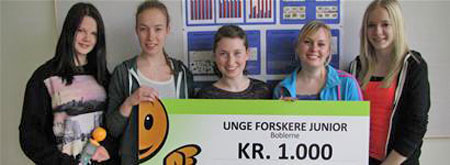|
17 May 2013 from Dr.DK Website
Researchers from the United Kingdom, the Netherlands and Sweden have shown great interest in the five girls’ biology experiment.
Take 400 cress seeds and divide them into 12 trays.
Then place
the trays in two rooms at the same temperature, six in each
room. Give the trays the same amount of water and sunlight over
12 days, but expose six of the trays to
mobile phone radiation.
The experiment is the brainchild of five girls from class 9.b at Hjallerup School in North Jutland, and it all started when the girls were finding it difficult to concentrate in their lessons.
The school did not have the equipment to test the effect of mobile phone radiation on the girls themselves, which, as it turned out, was probably a good thing.
Consequently,
the girls had to find an alternative, and the solution they came
up with was cress seeds.
The “healthy” cress,
which
was not exposed to radiation from the routers.
The results spoke for themselves: the cress seeds alongside the routers did not grow at all, and some even mutated or died.
The “sick” cress,
which was exposed to radiation from the routers.
The experiment secured the girls a place in the final of the “Young Researchers” competition, but that was only the beginning.
So far, leading researchers from the United Kingdom, the Netherlands and Sweden have shown great interest in the girls’ project.
Foto: Kim Horsevad From the left: Lea Nielsen, Mathilde Nielsen,
Signe Nielsen, Sisse Coltau and Rikke Holm.
Johanson considers the experiment to be ingenious and now wants to repeat it with a Belgian research colleague, Professor Marie-Claire Cammaert of the Université libre de Bruxelles.
Johanson also wasted no time in issuing an invitation:
The five girls from North Jutland have not yet made any decisions about their future careers.
They are still taken aback by all the sudden attention.
There has also been another rather more down-to-earth consequence of the cress seed experiment.
|



